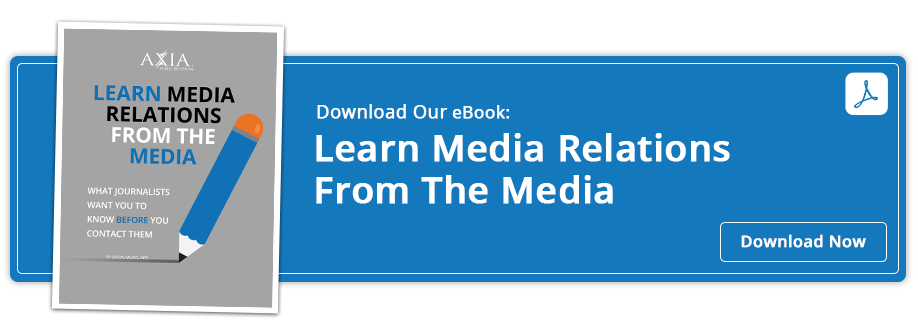 What could be more important to your publicity than a public relations announcement issued to the media and other key audiences? Yes, we’re talking about a press release, aka a news release: the quickest and easiest way to get publicity for your company. A professionally written press release can result in numerous published articles and blog posts about your company. Therefore, it is very important to avoid these five common mistakes in your press release:
What could be more important to your publicity than a public relations announcement issued to the media and other key audiences? Yes, we’re talking about a press release, aka a news release: the quickest and easiest way to get publicity for your company. A professionally written press release can result in numerous published articles and blog posts about your company. Therefore, it is very important to avoid these five common mistakes in your press release:
Mistake #1: You don’t have a strong lead line.
The lead, or opening sentence of the press release, is very important because it serves as the hook to your story. It should grab your readers’ attention and get them interested enough to read your entire press release. Most editors will spend no more than 10 seconds on determining whether they’re going to use your press release, and it’s all based on your lead.
Mistake #2: You don’t have a local angle.
Most publications are looking for local stories. If you write about a small shop opening in Washington, DC, it’s very unlikely that people in California will care about it much. Making your story interesting to local readers will increase your chances of getting it published. But what if you’re releasing a story of national interest? Then it needs to be significant enough to the local outlets to pick it up.
Mistake #3: You’ve used bad grammar and punctuation.
Nothing will result in your story hitting the bottom of the trash bin faster than bad grammar and punctuation; misspelled words and incorrect quotation punctuation will make your press release look unprofessional. Grammar and punctuation in your story are just as important as the story itself. Included in the proper uses of grammar and punctuation is using AP style and following the standards for writing laid out in The Associated Press Stylebook. Many news outlets follow this style guide strictly and use the inverted pyramid organization principle.
Mistake #4: You’re overselling it.
Press releases screaming “BUY ME” in every other sentence will not get very far; instead, it should tell your story. Press releases are for getting your audience interested in and thinking about your product, organization, event, etc.
Mistake #5: No news is bad news.
Journalists are always looking for news, so your press release should be newsworthy. There’s no point in writing about that “new” CEO (who actually already retired a couple of years ago). It’s old news. Tell them something they don’t know yet. A new, shiny, relevant story (with the local angle, of course) will get editors’ attention right away.
Make sure you always keep in mind these basics when you’re drafting your press release. To get your press release published, it is imperative that you have a strong lead line (hook); perfect grammar and punctuation; a local aim with something new to share; and a non-salesy angle.
To learn more about exactly what journalists want to see from your company, download Axia Public Relations’ e-book Learn Media Relations From The Media and take your business to the next level.
 Yulia Dianova is a public relations professional who is skilled in building relationships with target audiences. She provides counsel to organizations that seek PR help to further growth and reach goals. Yulia earned a master’s degree in public relations management from University of Maryland University College. She is fluent in Russian and is always looking for a new challenge.
Yulia Dianova is a public relations professional who is skilled in building relationships with target audiences. She provides counsel to organizations that seek PR help to further growth and reach goals. Yulia earned a master’s degree in public relations management from University of Maryland University College. She is fluent in Russian and is always looking for a new challenge.
Featured image credit: <a href="http://www.123rf.com/#
Topics: public relations, news release

Comment on This Article